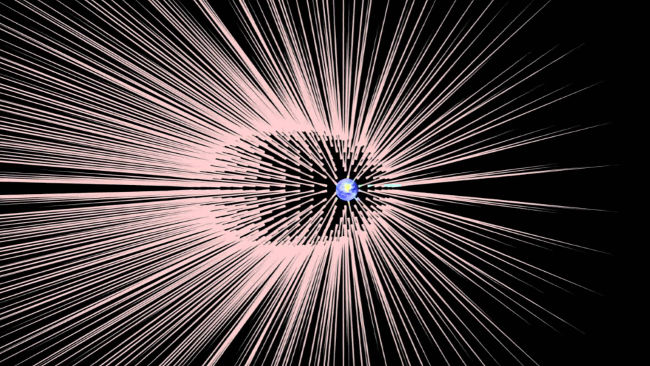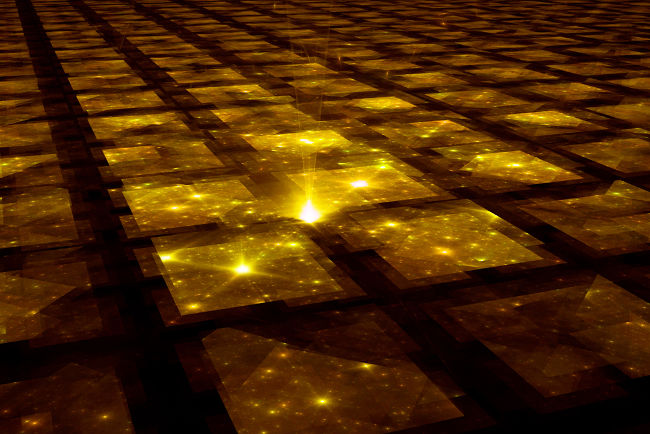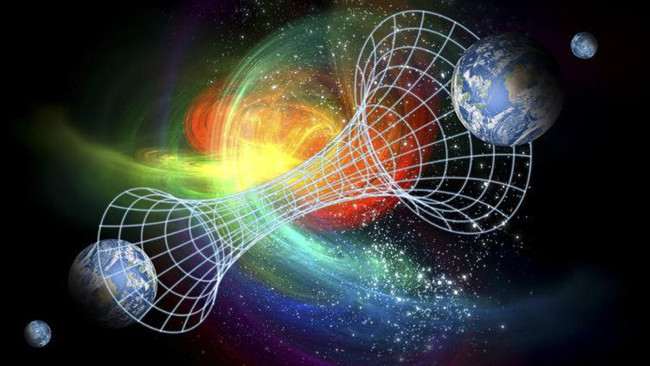The 9 biggest mysteries of modern physics make scientists headaches (Part 1)
Modern physics studies phenomena in nature at the micro and macro level based on the theory of quantum mechanics and relativity.
The physical knowledge of the universe is immense. Each new physical discovery opens up deeper, larger questions about physics.
Here are the 9 biggest mysteries of modern physics that scientists are trying to answer.

Material composition constitutes the universe.(Photo: NASA.)
1. Dark energy
Based on theoretical calculations, scientists believe that if the universe exists only ordinary matter, gravity will draw everything together. But current observations show that the universe is continuing to expand rapidly. This makes it impossible for scientists not to hypothesize about dark energy, which has the opposite effect of gravity, pushing things apart.
Based on the observed speed of space expansion, scientists believe that dark energy must account for more than 70% of the universe. But no one knows how to find it. Recently, the best researchers in the world have only narrowed the scope of searching for dark energy.
2. Dark matter

Scientists have clear evidence that about 84.5% of matter in the universe does not absorb or emit light, they are called dark matter. Until now, no one has been able to observe directly or discover by indirect means of dark matter.
Scientists can only detect the existence and properties of dark matter through its gravitational effects on ordinary matter, radiation and the structure of the universe. This mysterious material is thought to be made up of " weakly interacting heavy particles ", WIMPs, covering the Milky Way.
These particle detectors have been built and placed in some parts of the world but have not yet produced results. According to a recent study by a team of astronomers, dark matter can form very long fibers that run throughout the universe, even though they can also be released from the Earth like hairs.
3. The afternoon of time
Time is said to always move forward, due to a nature of the universe called entropy . Entropy is the degree of the disorder of the universe and always increases. When entropy has increased, the process is not reversible.
This is simply a matter of logic. In the universe there are always more particles arranged in order than the orderly particles. When there are changes, particles tend to fall into a more chaotic state. But why is the entropy in the past so low? Or, why did the universe initially be very orderly, when a huge amount of energy was compressed inside a small space?

Multi-universe quilted multiverse.(Photo: Shutterstock.)
4. Parallel universes
From the astronomical data obtained, scientists believe that the universe has a "flatter" ability rather than curvature. And if so, the universe is endless and the area we see is only a small part of a multi-quilted multiverse multiverse .
 (Photo: Thespiritscience.net.)
(Photo: Thespiritscience.net.)
According to quantum mechanics, in each space there is only a certain number of possible particle configurations (10 caps 10 caps 122 possibilities). Therefore, with an infinite number of "con" universes, the arrangement of particles must repeat countless times. That is, there are countless parallel universes from parallel universes that are copies of each other, the universes differ only in one particle position, two particle positions . until different parallel pillars. completely.
If this hypothesis is correct, is there any way to detect the presence of parallel universes?
- 10 interesting facts about black holes in the universe (Part 1)
- 10 interesting facts about black holes in the universe (Part 2)
You should read it
- The 9 biggest mysteries of modern physics make scientists headaches (Part 2)
- Dark matter, dark energy and unexplored mysteries
- After all the mysterious material that occupies more than half of the universe hidden for billions of years has been discovered
- Elements of the universe
- New research confirms: The mystery of 'dark energy' may not exist
- Dark energy and dark matter may not exist as scientists believe for nearly a century
- Gravitational waves can be the key to revealing the existence of another dimension in the universe
- Scientists have finally discovered the mystery of dark matter in the universe
- 9 amazing facts about the universe amaze you
- Scientists have found evidence to prove the existence of the parallel universe
- Astronomers create the most accurate map of all matter in the universe
- Scientists conclude that the universe should have been wiped out since its formation
May be interested

The 9 biggest mysteries of modern physics make scientists headaches (Part 2)

Crazy idea: Create an atmosphere for Mars

How terrible is the rocket that will bring people to Mars?

Science test: Potatoes can be grown on Mars

Learn about extraterrestrial super-Earth - Gliese 581c

Why NASA never wants to send people to Venus






 The 9 biggest mysteries of modern physics make scientists headaches (Part 2)
The 9 biggest mysteries of modern physics make scientists headaches (Part 2) The top 6 biggest mysteries yet to be deciphered by the ancient world
The top 6 biggest mysteries yet to be deciphered by the ancient world 12 ways to treat headaches immediately without using drugs
12 ways to treat headaches immediately without using drugs 8 causes of headaches in the morning
8 causes of headaches in the morning The mystery of the ancient Egyptian helicopter, the disappearance of the Nazca civilization ... finally has a solution
The mystery of the ancient Egyptian helicopter, the disappearance of the Nazca civilization ... finally has a solution 9 new scientific mysteries that have not been solved make it difficult for scientists
9 new scientific mysteries that have not been solved make it difficult for scientists